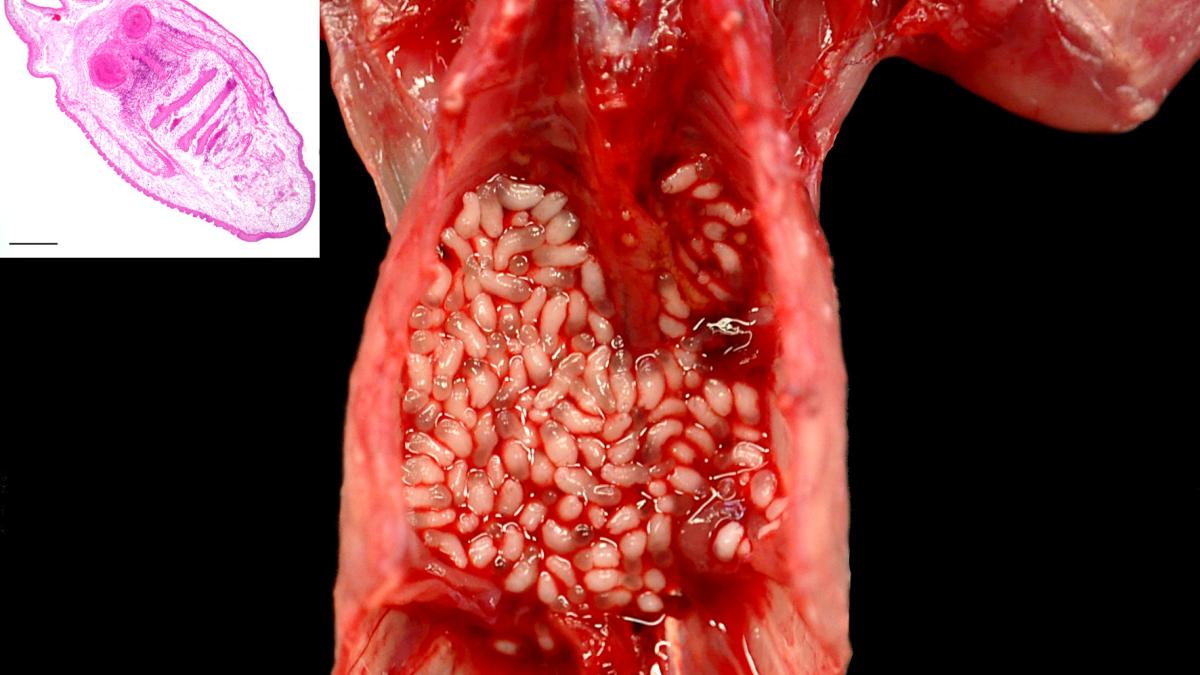
Animal species: Adult, female reed vole (Microtus fortis)
Organ: Thoracic cavity
Macroscopical findings: Within the thoracic cavity numerous up to 2 mm long and 1 mm in diameter, longitudinal oval, not-adherent, softelastic, witish parasites consistent with cestode fins were detected.
Histological findings: The cestode fin is lined by a tegument, shows two suckers and contain Calcareous corpuscles in longitudinal section (Insert: Hematoxylin and Eosin. Bar = 200 µm).
Morphologic diagnosis: Thoracic cavity, numerous cestode fins (consistent with Cysticercus pisiformis)
Etiology: Cysticercus pisiformis
Name the disease: Cysticercosis
Comment: Cysticercus pisiformis is the larval stage of Taenia pisiformis. It is commonly found in rabbits and rodents, and its definitive hosts are dogs, foxes, and cats. After ingestion by intermediate hosts, the hatched oncospheres migrate through the intestinal wall and portal vein mainly to the liver and rarely to the lungs, subsequently attaching to the peritoneum or pleura and causing visceral cysticercosis.
References:
1. Gardiner CH, Poynton SL. An atlas of metazoan parasites in animal tissues. Armed Forces Institute of Pathology; 2006.
2. Barthold SW, Griffey SM, Percy DH. Pathology of Laboratory Rodents and Rabbits. Chichester: Wiley; 2016.
Contributors: Sarah Pfetzing (Institute of Veterinary Pathology, Faculty for Veterinary Medicine, Leipzig University, Leipzig, Germany), Dr. Zaida Rentería-Solis (Institute of Parasitology, Faculty for Veterinary Medicine, Leipzig University, Leipzig, Germany) and Prof. Dr. Florian Hansmann (Institute of Veterinary Pathology, Faculty for Veterinary Medicine, Leipzig University, Leipzig, Germany)
